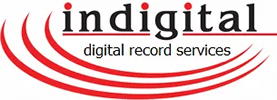Table of Contents

Embracing the Digital Shift: The Essentials of Document Scanning
Here at Indigital Inc., nestled in the tech-savvy heart of San Francisco, we’ve witnessed firsthand the transformation of paper-based operations into digital powerhouses. One cornerstone of this digital metamorphosis is document scanning, an area both replete with options and brimming with potential. From preserving precious memories to streamlining office workflows, the impact of converting physical documents into digital formats cannot be overstated.
Embarking on a digital journey may seem daunting, but we make it a point to simplify the complex. Let’s dive deep into the world of document scanning and unravel its intricacies, ensuring that when we mention document scanning, it’s not just about capturing an image–it’s about setting the cornerstone for a future-proof archive.
The Digital Transformation: Elevating Efficiency
When talking about digital transformation, efficiency is the name of the game. It’s about converting stacks of paper into a neat, searchable, and secure digital file cabinet. We’ve helped countless businesses make this leap, and the benefits are abundantly clear: reduced physical storage needs, quick information retrieval, and bolstered data security are just the start.
Why Scan Documents?
Consider a world where contracts, invoices, and client records are available at your fingertips, without sifting through filing cabinets. Such convenience is not a luxury but a necessity in the fast-paced digital era. Moreover, scanned documents are the foundation for automation tools–imagine the time saved when your digital files integrate seamlessly with your customer relationship management system.
But it’s not just the office that reaps the rewards. From cherished family photos to historic manuscripts, scanning helps preserve the past while making it infinitely more accessible in the present. It’s like building a bridge between the analog and the digital–a bridge that we at Indigital Inc. are proud to help construct.
The Scanning Process: A Closer Look
The process of document scanning might seem straightforward, but it involves more than meets the eye. It’s not just about feeding paper through a machine; it’s about ensuring that the digital versions are as good, if not better, than the originals.
We often counsel clients to consider resolution, color accuracy, and file formats–the trifecta of a solid scanning strategy. After all, what good is a scanned document if it’s not legible or if it doesn’t capture the nuances of the original?
Selecting the Right Scanner
Selecting the right scanner is akin to choosing a trusty sidekick in your digital adventure. From compact mobile scanners that zip through receipts and business cards, to large-format behemoths capable of digitizing architectural plans, each scanner has its realm of expertise.
We’ve seen businesses thrive by matching their needs with the perfect scanning equipment. Whether it’s a high-speed scanner for a law firm’s mountains of case files or a photo scanner with impeccable color reproduction for an artist’s portfolio, the right tool can make all the difference.
Scanning in Action: Professional and Personal Use
On the professional front, document scanning is a boon for industries across the board. Medical facilities digitize patient records for better healthcare outcomes; legal teams scan sensitive documents to safeguard client confidentiality; educational institutions convert libraries of academic material for easy student access.

In the personal sphere, scanning transforms the way we interact with our history and memories. Family photo albums, personal journals, and important personal documents are all candidates for digitization, ensuring they’re preserved and shareable for generations to come.
Integrating Scanned Documents: Beyond the Scan
The magic of document scanning extends far beyond the act itself. It’s what you do with those digital files that can revolutionize your operations. As advocates for the seamless integration of technology, we guide clients through the post-scan journey–from organizing files into intuitive structures to implementing document management systems that leverage the full power of digitization.
Imagine, no more lost documents, no more “version confusion,” and no more fear of accidental destruction. With everything in its digital place, businesses operate with a newfound clarity and confidence.
Security and Compliance: Safeguarding Your Digital Assets
In our line of work, we can’t stress enough the importance of digital security and compliance. When documents go digital, they must be protected just as fiercely as their physical counterparts, if not more so. We ensure that our clients understand the best practices for digital storage, including encryption, backups, and access controls.
Regulatory compliance is another key consideration. In healthcare, for instance, digitized medical records must comply with HIPAA standards, while financial institutions must navigate a maze of data protection regulations. Tailoring solutions to meet these industry-specific demands is part of our commitment to our clients.
Embracing the Cloud: The Future of Storage
Let’s talk about the cloud, shall we? Cloud storage has revolutionized the way we think about document preservation. With a digital copy safely stored online, concerns about physical damage or loss are alleviated. Plus, the ability to access your documents from anywhere in the world is quite the game-changer, especially in an era where remote work has become the norm.
We’ve seen clients transition from trepidation to triumph as they embrace cloud solutions. The peace of mind that comes with knowing your data is secure and accessible is truly invaluable.
The Human Touch: Relatable Experiences in Scanning
Amidst the technicalities, it’s the human stories that truly resonate. Take, for instance, the small business owner whose transition to a paperless office not only boosted productivity but also reclaimed space once lost to filing cabinets. Or consider the artist who digitized a lifetime’s worth of sketches, now able to share her work with the world at the click of a button.
These stories aren’t just anecdotes; they’re the fabric of the digital tapestry we help weave. They remind us that behind every scanned document, there’s a person, a purpose, and a story.
Whether it’s the thrill of watching a startup take its paperless plunge or the satisfaction of helping a family safeguard their history, these moments are what make our work at Indigital Inc. truly rewarding.
Innovating Document Scanning: The Indigital Approach
At Indigital Inc., we don’t just keep pace with document scanning trends–we set them. By exploring untapped potentials and pioneering new practices, we provide our clients with avant-garde solutions that redefine what’s possible.
The realm of document scanning is brimming with opportunities for innovation. We’re always on the lookout for cutting-edge software that can streamline the digitization process or hardware that brings new levels of precision to the table.
Conclusion: A World Transformed
As we draw this exploration to a close, it’s clear that document scanning is about more than converting paper to pixels–it’s about enabling a more connected, efficient, and secure world. In an era where the line between the physical and digital continues to blur, it’s these digital repositories that will stand the test of time.
So, as we look to the horizon, we see a world where document scanning is not just an action but a gateway to endless possibilities–a world where we at Indigital Inc. are proud to guide, support, and innovate for our clients. The digital renaissance is here, and together, we’re ready to make history.

How do I scan a document?
Scanning a document is a remarkably simple process that can be done using a variety of devices–scanners, multifunction printers, or even smartphones. At Indigital Inc., we recommend these steps for a no-fuss scanning experience:
- Prepare your document: Ensure it’s free of staples and smudges for a clean scan.
- Choose your scanner: Select a device that suits your needs. Flatbed scanners work great for delicate or thick documents, while sheet-fed scanners are ideal for quick, multi-page documents.
- Set your specifications: Adjust the resolution and color settings. Typically, a resolution of 300 dpi (dots per inch) is sufficient for text documents, while you might go higher for images.
- Scan the document: Place it on the scanner bed or feed it into your scanner, then use your scanning software to commence the scan.
- Review and edit: Preview your scan and make adjustments as necessary–cropping edges, straightening, or enhancing the image.
- Save and organize: Save your scanned document in the desired format (such as PDF or JPEG) and choose a naming convention that makes it easy to find later.
Remember, the key is to tailor the process to your specific needs. Do you want to dive deeper into how scanning can streamline your workflow?
How much does FedEx charge to scan documents?
At Indigital Inc., while we focus on digital marketing, we understand that physically scanning documents is sometimes necessary. FedEx Office, formerly known as Kinko’s, offers scanning services that are typically priced by the page. Prices can vary by location, but you might expect to pay around $0.49 to $0.99 per page for standard letter-sized pages. If you have a larger volume of documents or require advanced services like image enhancement, the price can increase. We suggest contacting your local FedEx Office for the most accurate pricing and service options. Are you evaluating whether in-house scanning or outsourcing is the most cost-effective for your business?
Is there a free app to scan documents?
Yes, there are several free apps available for scanning documents using your smartphone. Apps like Adobe Scan, Microsoft Office Lens, and Google Drive’s built-in scanner offer powerful scanning capabilities without any cost. They use your phone’s camera to capture the document and often include features to enhance the image, convert it to PDF, and store it in the cloud. While these free options are great for occasional use or small volumes, businesses looking for higher efficiency and integration may benefit from more advanced, paid applications. How can we help you decide which scanning solution is the best fit for your business requirements?
How do I scan a document and email it as a PDF?
To scan a document and email it as a PDF, the process can be summarized in a few steps. Once you have scanned the document using your preferred device and saved it as a PDF, you can attach this file directly to an email. Here’s a brief overview:
- Scan the document using your scanner or app, ensuring you save it as a PDF.
- Open your email client and compose a new message.
- Attach the PDF file using the attachment button (usually indicated by a paperclip icon).
- Enter the recipient’s email address, a subject line, and your message, then send.
Many scanning apps also offer a feature to share documents via email directly from the app, streamlining this process even further. Would you like to explore how to maintain privacy and security when emailing important documents?
What are the main benefits of document scanning for small businesses?
For small businesses, document scanning offers a range of benefits that can be transformative. Firstly, it reduces the need for physical storage space, which can be a significant cost and space saver. Digitally scanned documents are easier to search, share, and backup, increasing efficiency and productivity. Additionally, digital files can be encrypted and securely stored, enhancing data protection. Scanning documents also allows for easy integration with other digital systems, paving the way for automation and advanced data analysis. Do you have specific goals for going paperless or improving your document management?
What are some best practices for document scanning to ensure quality and consistency?
Ensuring quality and consistency in document scanning involves several best practices. At Indigital Inc., we recommend:
- Standardizing scanning settings: Define the resolution, color depth, and file format for different types of documents within your organization.
- Using appropriate equipment: Select scanners that match the volume and type of documents you handle.
- Regular maintenance: Keep your scanning equipment clean and serviced to avoid issues like streaks or spots on the scans.
- Quality checks: Implement a process to review scanned documents for readability and accuracy.
- Consistent file naming: Develop a logical file naming and organization system to ensure documents are easily retrievable.
Adhering to these practices can significantly impact the success of your document management strategy. Curious about how to train your team in these practices for a smoother transition?
Resource Section
- National Archives–Document Scanning and Digitization: This resource provides insights and best practices on the digitization of historical documents and photographs. https://www.archives.gov/preservation/digitization
- Library of Congress–Digital Preservation: Learn about long-term preservation of digitized documents and how to ensure their accessibility over time. https://digitalpreservation.gov/
- U.S. Department of Health & Human Services (HHS)–Health Information Privacy: Offers comprehensive information on the Health Insurance Portability and Accountability Act (HIPAA), including standards for the protection of electronic personal health information. https://www.hhs.gov/hipaa/index.html
- U.S. Securities and Exchange Commission (SEC)–Records Management: Guidelines for financial institutions on maintaining and protecting records in compliance with SEC standards. https://www.sec.gov/records-management
- Educational Technology Clearinghouse–Digital Resources for Educators: Provides educational materials and strategies for educators looking to digitize instructional materials and resources. http://etc.usf.edu/
- Cybersecurity & Infrastructure Security Agency (CISA)–Protecting Sensitive Information: A guide to implementing cybersecurity best practices for protecting digital information. https://www.cisa.gov/safeguarding-sensitive-information
- Internet Archive: A non-profit library offering millions of free books, movies, software, music, websites, and more. Great for understanding the importance and impact of digital archives. https://archive.org/
